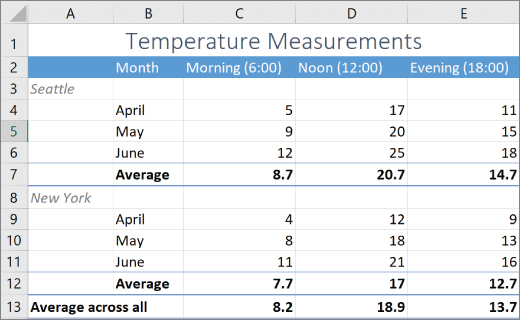DATA PREPARATION
Before starting any analysis, one of the key issues to consider is whether the data is in the right format.
Datasets can be structured in different ways. In most cases, datasets have one of two shapes:
- Wide tables, with many columns. Often these are summary tables containing aggregated measures (such as pivot tables in Excel). Here, some preprocessing of the data may be necessary.
- Long tables, most of the time without aggregations and with each row containing one data point.
Crosstab Reports with Wide Tables
A common mistake made by new Tableau users is attempting to connect to a fully formatted Excel report that already shows data aggregations (see Figure 1.2). Fair enough, since the claim is that you can use Tableau to visualize all sorts of data. But you will quickly realize that this won't get you very far, because you won't be able to create many different types of visualizations.

Figure 1.2 Formatted and aggregated report showing averages across several...



























































